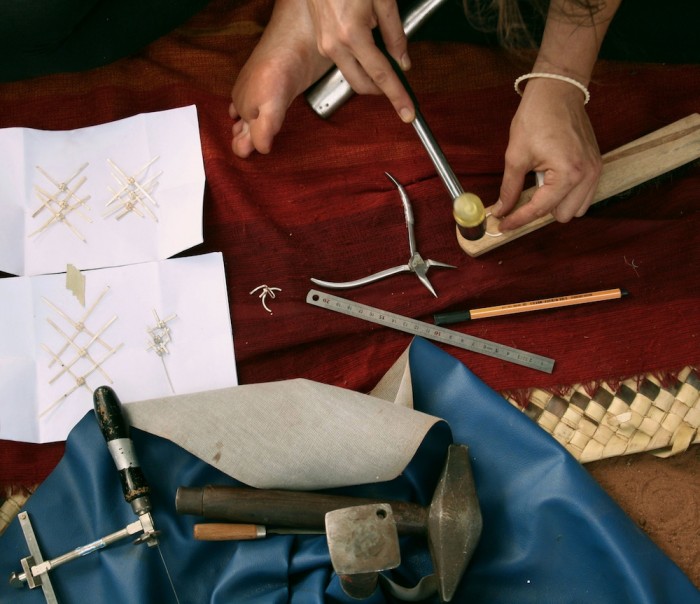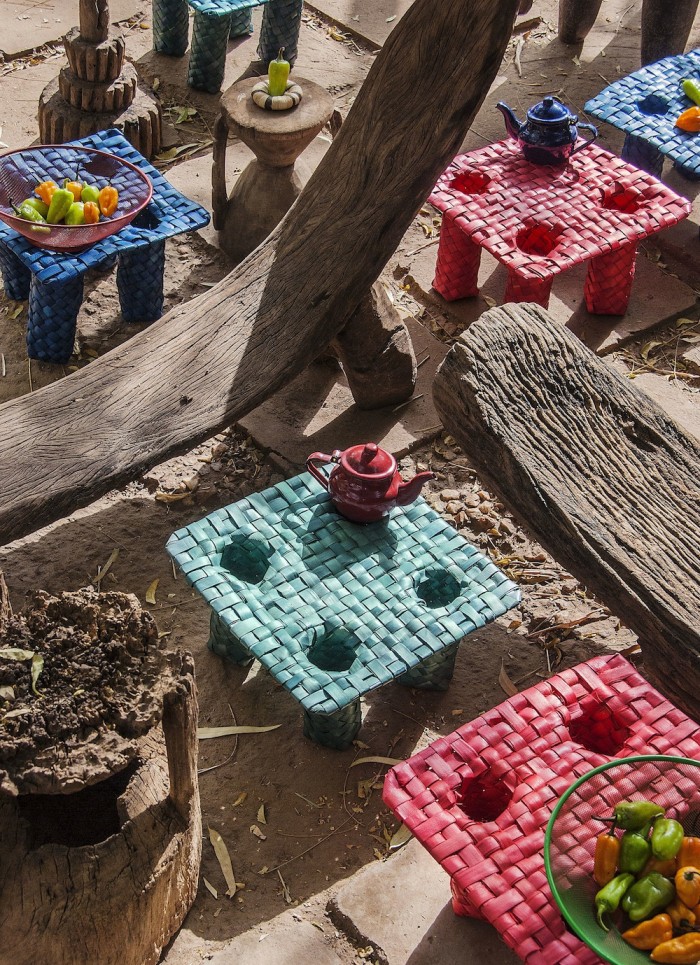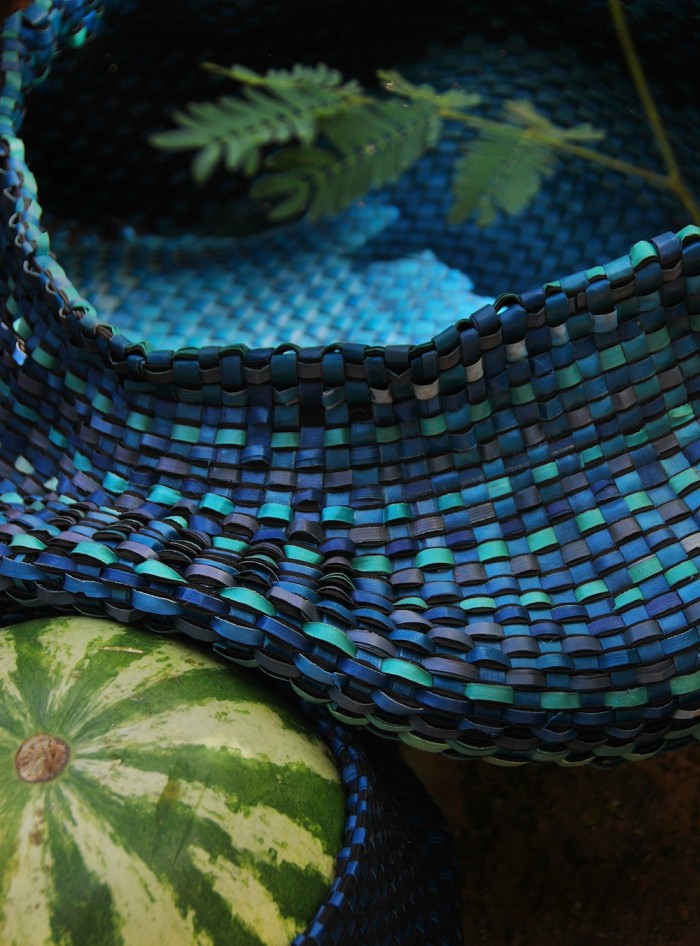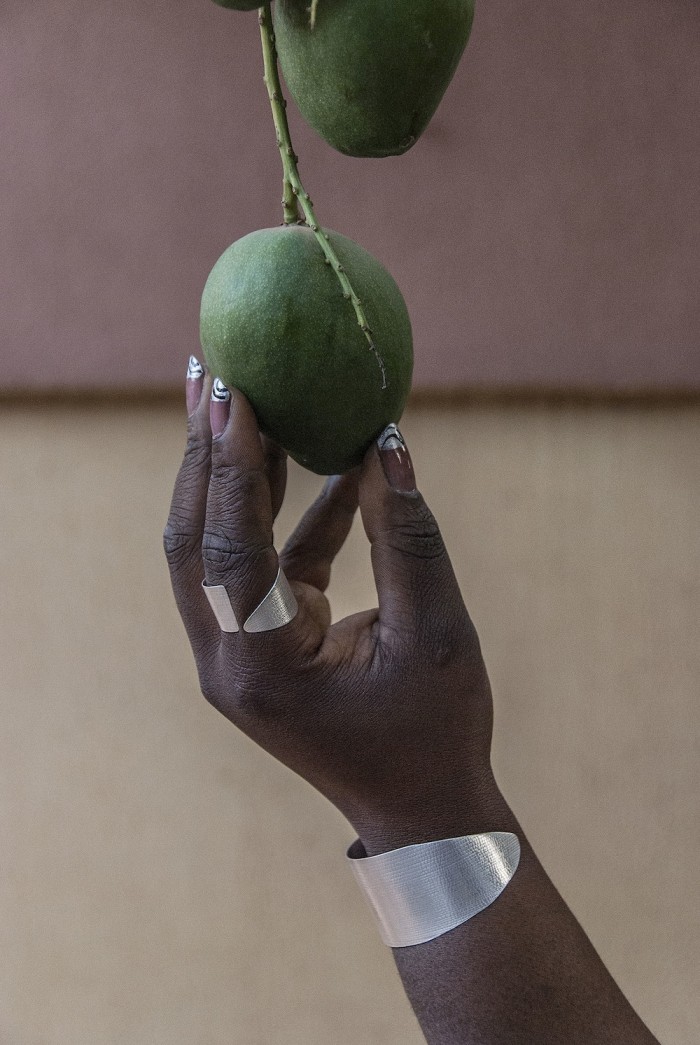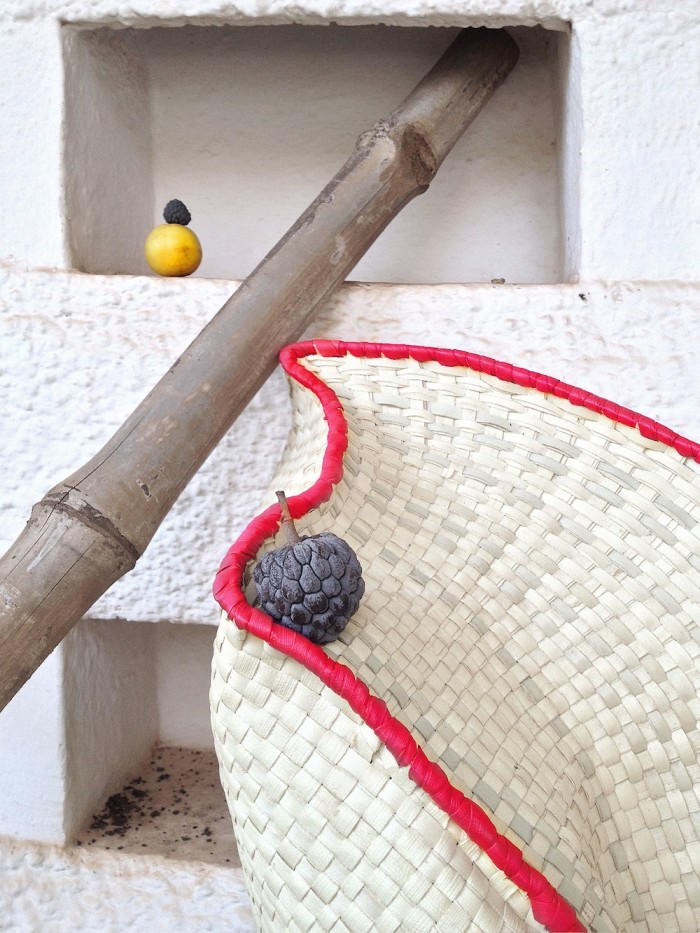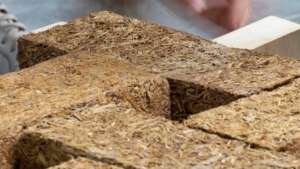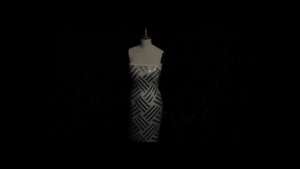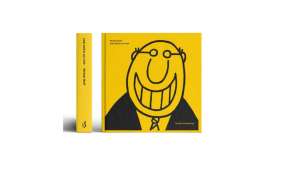Designers are adept at dealing with the unknown. Their training provides a road map: identify a need, do the research, come up with an idea, test it and tweak your solution. But as a group of six designers from France and Switzerland recently discovered, learning new skills and imparting your own to others is a different thing entirely in a foreign culture where you don’t speak the language.
The designers spent the month of October living in Banfora in the southern part of Burkina Faso, collaborating with the Benkadi Gouafo association of female palm weavers and two Tuareg jewellers from Niger. They were taking part in the second edition of Hors Pistes, "a collaborative project sitting between craft and design that goes off the beaten track" (the phrase is French for "off road") explains its founders, Amandine David and Marie Douel.
They are French product designers, both recent graduates who have travelled widely to other countries where they worked with local craftsmen.
We got very interested in the relation between craft and design, and the place of traditional craft objects in each country we’ve been in, they say.
They intend to run a series of workshops around the world for young European designers to discover crafts from other cultural traditions as well as for artisans to develop their expertise and extend their scope. Their first edition brought six product designers, two graphic designers and two photographers to work with seven artisans in Ougadougou, Burkina Faso’s capital, in 2013. "Through research and experimentation, innovative products and prototypes will be produced to celebrate a cross-cultural perspective," Douel and David say.
Forging that perspective and finding common ground, however, is a process that the designers and craftspeople had to work hard at, with misunderstandings and struggles part of the challenges to overcome. Making something together with someone from another culture opened a window onto different ways of seeing the same object. The duo leading the project stressed the importance of sensitivity to local ways of doing things. "We are careful that all the projects respect the traditional craft they are working with and we guide the designers to validate their projects in accordance with the techniques.”
As the group prepares to open an exhibition of their collaborative designs at the Institut Français in Ouagadougou, Design Indaba asked Douel and David how the project went and what kinds of unexpected lessons they learned along the way.
Photo credits: Émile Barret, Gwendoline Leméret, Cécile Vulliemin, Hors Pistes 2014.
Why you decided to establish Hors Pistes?
In 2012, we both went to Burkina Faso to work with a leather craftsman and an aluminium caster. While we were there, we met a lot of enthusiastic and talented craftsmen. On the one side, we knew there was great potential in Ouagadougou and on the other, some young designers we knew back in Europe were very receptive and enthusiastic when we told them about the crafts in Burkina Faso. We had all the components to start our first Hors Pistes workshop! Hors Pistes is a project that develops alternative processes of creation. It is also an opportunity for designers and craftsmen to break their working habits by sharing with creators from a totally different culture.
Why did you choose to base your second workshop programme in Banfora?
Our goal is to hold each edition in a new place. Banfora is a city located in the south of Burkina Faso, in the waterfalls region, where the palm-weaving technique traditionally comes from. It was also a way for us to soften the impact of leaving Ouagadougou, our “home sweet home” when it comes to working with craftsmen. This way, we could plan our next edition in new and totally unknown places!
How did you go about selecting the designers you brought over from Europe
We selected designers both through their work and personalities. As the workshop involves living in a community for a month, designers and craftsmen have to be easygoing and willing to share. We tried to build a team of designers with different profiles and personalities; each designer was selected for their singular design approach. This way they can both discover and learn from the craftsmen and from each other.
How did you establish links with the community in Banfora?
Last year after the first Hors Pistes edition, Marine Leloup, the director of the Ouagadougou French Institute, told us about the Banfora weaver community. She also introduced us to Mathias Lafon, who worked for a long time with Akama, a Tuareg jeweller. We met the Benkadi Gouafo community in Banfora and Akama in Ouagadougou to understand their skills and see the work they make.
What were some of the surprising things about the way they work?
In Banfora, we’ve been deeply surprised by the holes that the women use to work in. They dig two-metre holes to weave inside so they can be protected from the wind. It also creates a humid atmosphere that keeps the fibre supple, shiny and workable. Then we spent some time with Akama, under his Tuareg tent. He is a very talented jewellery maker who headed the Hermes factory in Agadez [the largest city in Niger] for three years. He showed us the few tools he needed to produce his jewellery, which was very impressive. We thought that the contrast between those two traditional crafts would be very interesting to reveal.
What did you observe in the working relationships that developed between the designers and the artisans?
Communication and tool references were the main issues of this workshop. As the majority of the weavers don’t speak French, the designers had to find other ways to communicate their ideas. As designers working in Europe, we are used to communicating using drawings, models, plan, centimetres, tools such as ruler and so on… By contrast, the weavers had only one tool, the knife; one measure, counting the fibres; and one reference, their hands. During the course of the workshop, the designers had to change their normal ways of communicating, working side by side with the weavers and inventing mechanisms to communicate their ideas through gestures, object collages, wood shapes, models made of metal wire… It will be very encouraging for the next editions to see that it is possible to create projects with someone who speaks a different language.
Any observations to share about being in Burkina Faso? It is such a different environment from what you are used to…
Working in a totally different country presented some challenges initially because we don’t have the same things and materials at our disposal. It’s a whole process to get familiar with this environment. There were things we thought were essential to work with but which turned out not to be. Electricity is an example. Both Akama and the weavers can work and produce objects without any electricity: wood and fire to dye the fibres, tools and hands to shape the jewels.
Why do you feel it is important for designers to share their skills and see how local artisans work in other cultures?
We think it was a real enrichment both for the designers and the craftsmen to share their skills and discover a different way to consider the objects. For example, weavers produce baskets and mats that are cheap objects to buy and use in everyday life. People use them to store things in or sleep on. They don’t pay attention to the details because they would rather buy a cheap object than a well-finished, expensive one. The person in charge of the weavers’ association told us that people don’t care if the mat is perfectly rectangular or not because they just sleep on it. So, it was something really new when the designers asked the weavers to respect a specific shape and to reproduce exactly the same thing again and again.
What impact did this have on the designers themselves?
It was very interesting to re-think the way we are used to working in Europe. The process of creation is quite well-defined: you have an idea, you make several sketches, then a 3D model or a technical drawing and several prototypes before arriving at a final object that best matches your concept. Here in Burkina Faso, the process of creation is much more spontaneous: you have an idea in mind, then you make it real. Less time is spent between your first thought and the final object. Neither is a better way to create; it just depends on your culture and background. Thus it was really interesting for the designers to be challenged on those issues because 3D models, renderings and technical drawings were useless during this workshop.
What was the final outcome – the products that were made? What will its afterlife be?
The collection is very rich and tells a lot about each designer’s perception of the craft technique and the working environment. Some of the projects will be presented at the Saint-Etienne Biennale of Design in 2015. Then we are looking forward to showcasing the whole collection in different European cities – maybe Paris, Milan or Brussels and overseas depending on the opportunities we get. Besides that, we continue to produce the objects from the first edition with the same craftsmen and Maurice Nagalo, a Burkinabe designer, who is in charge of monitoring the process. After the positive feedback the first edition received during our many exhibitions this year, we look forward to developing the Banfora collection further into a sellable product range in 2015.

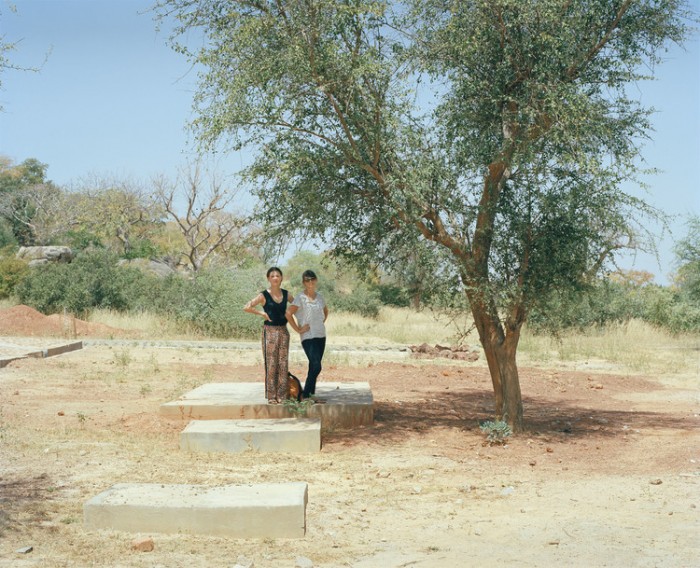
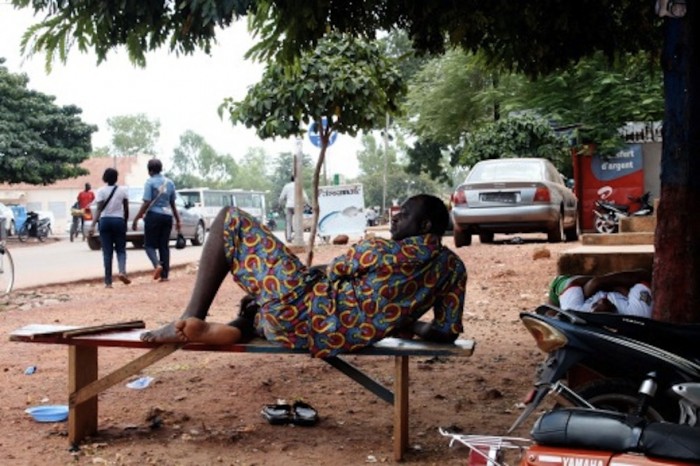
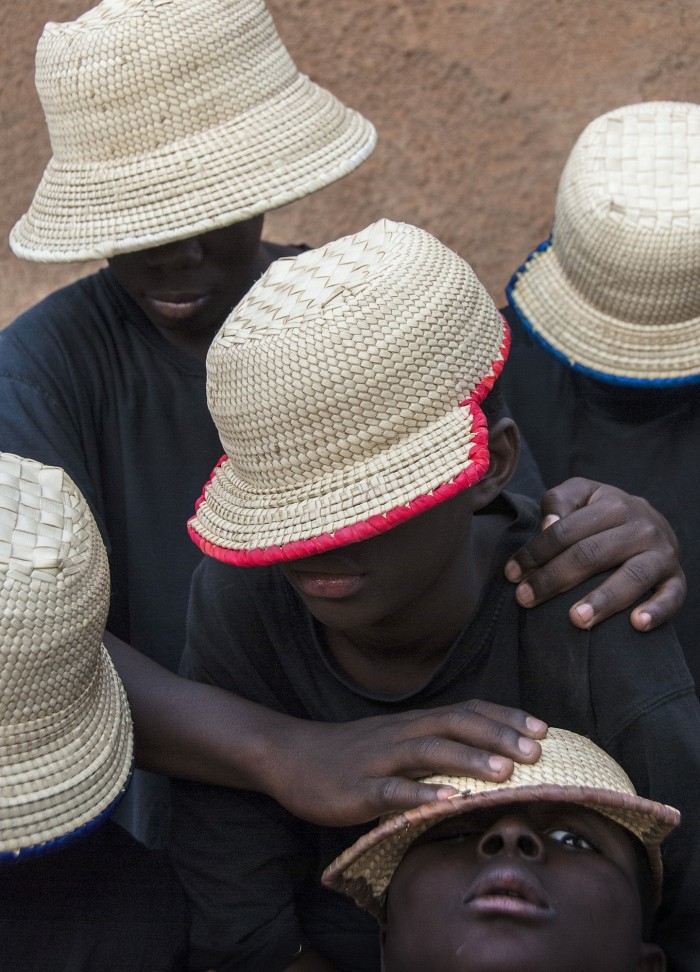
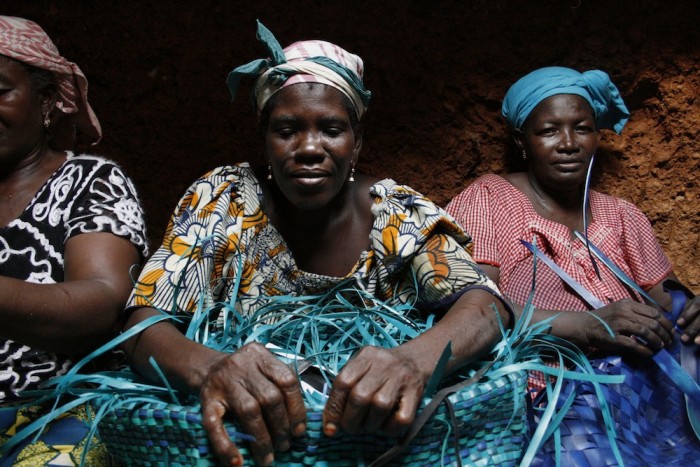
![<h3>What were some of the surprising things about the way they work?</h3><p>In Banfora, we’ve been deeply surprised by the holes that the women use to work in. They dig two-metre holes to weave inside so they can be protected from the wind. It also creates a humid atmosphere that keeps the fibre supple, shiny and workable. Then we spent some time with Akama, under his Tuareg tent. He is a very talented jewellery maker who headed the Hermes factory in Agadez [the largest city in Niger] for three years. He showed us the few tools he needed to produce his jewellery, which was very impressive. We thought that the contrast between those two traditional crafts would be very interesting to reveal.</p>](http://www.designindaba.com/sites/default/files/styles/scaledlarge/public/node/news/19225/gallery/hors-pistes-hole-2.jpg?itok=0A-UTnQV)
